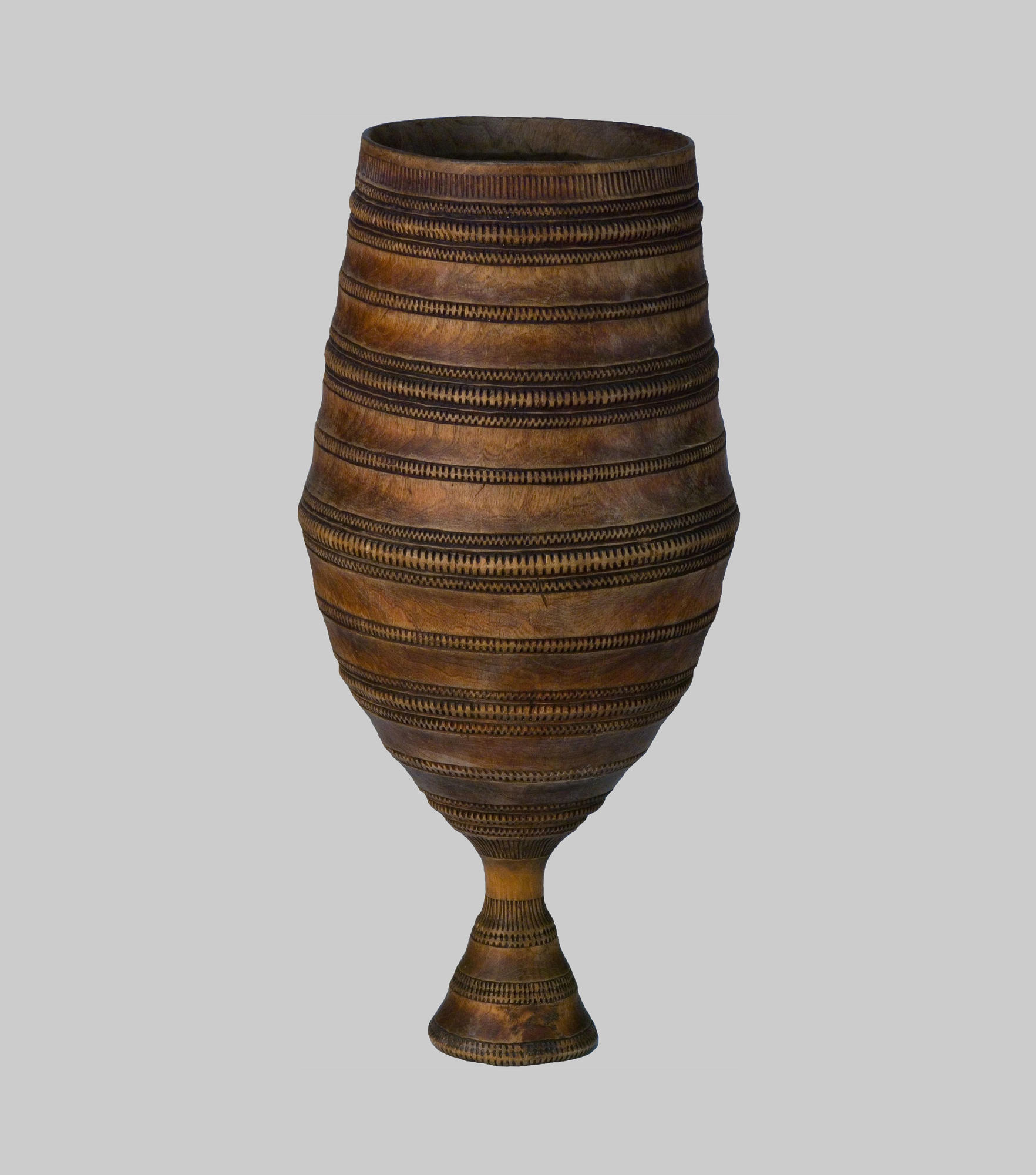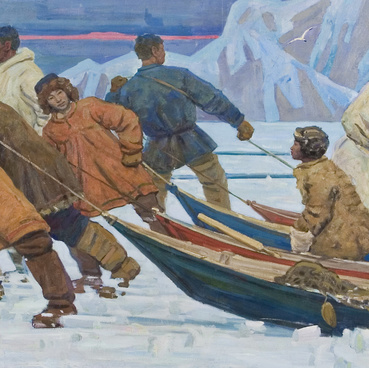Famous Soviet ethnographer and archaeologist Aleksey Okladnikov wrote: 'Сhorons are exceptional property of Yakut material culture. No other nation has got such kind of vessels now.'
The choron is national Yakut tableware, which is used for keeping and drinking koumiss – a sour milk product. The vessel is produced from wood – most often from birch tree – and embellished by an ornamental pattern. In shape, it resembles a goblet on one or three small legs. The process of its creation is handmade from the beginning to the end, that is why chorons do not repeat one another and they contain individual author’s style.
This choron on one leg was made by an unknown author in the second half of the 18th century. He chose traditional horizontal ornamental pattern taraahoyuu for the vessel decoration. It is made up of equal parallel sections that are located upright and close to each other. Researchers believe that such kind of picture symbolised fertility and lines were associated with gold sunlight or with long hair of patron goddesses of agriculture.
Names of many patterns for choron had symbolical significance and were connected with way of life and basic activity of the Yakuts. A certain group of ornamental patterns were destined for every part of bowl. For example, combed and toothed ornamental patterns were placed in the form of triangles and rhombs at the edge of neck. Vertebral pattern was used for the central part of vessel. Its name originates over the external similarity of picture with animals’ vertebra.
In the culture of the Sakha people, choron was not just a tableware, but rather a token of wealth and family abundance. Therefore, since ancient time, there was a tradition to bring the vessel with koumiss to the newly married couple at the Yakut weddings.
Also, such goblet is used during the main Yakut holiday – Ysyakh. It is celebrated on summer solstice on June, 21 and it is associated with the onset of the warm season. Usually, the celebration is accompanied with road dances, sports competitions and koumiss drinking. During this rite, the shaman asks Gods to give blessing to koumiss and after that, he prays over it.


